Miguel está celebrando el aniversario de su trasplante de médula ósea … Está celebrando la vida. Él insiste en que “nada es imposible”.
Miguel Oriol Torres López, es de Barranquitas, un pequeño municipio de montaña en el centro de Puerto Rico. Es un ávido ciclista de montaña y se acerca a los 10 años como sobreviviente de trasplante de médula ósea.
Insiste en que su experiencia y su trasplante lo hicieron más fuerte.
Su Médula ósea Dejó de Funcionar
 Era el 2007, mientras estudiaba en la Universidad Politécnica en San Juan, cuando Miguel fue diagnosticado y hospitalizado con anemia aplásica. La anemia aplásica es una condición rara y grave. La médula ósea deja de producir suficientes células sanguíneas, lo que deja al paciente cansado y en riesgo de infecciones potencialmente mortales. Afecta la producción de glóbulos rojos y glóbulos blancos, y a las plaquetas.
Era el 2007, mientras estudiaba en la Universidad Politécnica en San Juan, cuando Miguel fue diagnosticado y hospitalizado con anemia aplásica. La anemia aplásica es una condición rara y grave. La médula ósea deja de producir suficientes células sanguíneas, lo que deja al paciente cansado y en riesgo de infecciones potencialmente mortales. Afecta la producción de glóbulos rojos y glóbulos blancos, y a las plaquetas.
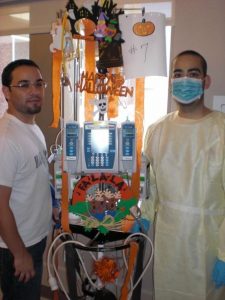 Durante el año siguiente, Miguel recibió tres tratamientos diferentes con la esperanza de estimular su médula ósea en el Hospital Auxilio Mutu en San Juan. También recibió transfusiones semanales de sangre y plaquetas. En septiembre del 2008, estaba combatiendo una infección severa cuando un doctor le dijo a su familia que era posible que no sobreviviría. Su hematólogo, Dr. José A. Lozada lo trasladado por aire a Houston, TX, al MD Anderson Cancer Center, donde estabilizaron su condición y comenzó el proceso para un trasplante de médula ósea.
Durante el año siguiente, Miguel recibió tres tratamientos diferentes con la esperanza de estimular su médula ósea en el Hospital Auxilio Mutu en San Juan. También recibió transfusiones semanales de sangre y plaquetas. En septiembre del 2008, estaba combatiendo una infección severa cuando un doctor le dijo a su familia que era posible que no sobreviviría. Su hematólogo, Dr. José A. Lozada lo trasladado por aire a Houston, TX, al MD Anderson Cancer Center, donde estabilizaron su condición y comenzó el proceso para un trasplante de médula ósea.
Un Trasplante Exitoso de Médula ósea
A pesar de la gravedad de su situación, resulta que Miguel fue muy afortunado. En unos pocos meses, su condición se estabilizó y sucedieron las siguientes cuatro “imposibilidades”:
- Se identificó un donante compatible. (Los pacientes hispanos y latinos solo tienen un 46% de probabilidades de encontrar un donante compatible en el Registro).
- El donante dijo que sí a una donación de médula ósea. (Solo el 37% de los donantes hispanos / latinos dicen sí cuando reciben la llamada).
- Miguel recibió un trasplante de médula ósea para salvarle la vida el 4 de noviembre de 2008.
- 100 días después, su nueva médula ósea comenzó a producir células sanguíneas.
Las probabilidades estaban en contra de Miguel, pero él las venció. Regreso a su ciudad natal en Puerto Rico. Continuó viajando al MD Anderson Cancer Center para chequeos. Después de 2 años en el hospital y con todos los medicamentos y tratamientos de quimioterapia, su cuerpo estaba débil. A través de un amigo, que era un entrenador de spinning, Miguel comenzó a tomar clases de spinning para recuperar las fuerzas. Su amigo también lo presentó a las carreras de bicicleta de montaña.
Después de su Trasplante
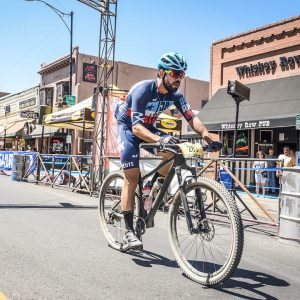 Las carreras de bicicletas eran nuevas para Miguel. Le dio algo que había estado perdiendo después de todo ese tiempo en el hospital: movimiento, libertad y entorno natural. En muy poco tiempo, comenzó a entrenar y conoció a muchos nuevos amigos. También empezó a participar en carreras de bicicleta de montaña de larga distancia. Sus finales de carrera fueron bastante impresionantes:
Las carreras de bicicletas eran nuevas para Miguel. Le dio algo que había estado perdiendo después de todo ese tiempo en el hospital: movimiento, libertad y entorno natural. En muy poco tiempo, comenzó a entrenar y conoció a muchos nuevos amigos. También empezó a participar en carreras de bicicleta de montaña de larga distancia. Sus finales de carrera fueron bastante impresionantes:
- Baja Epic – 2 ° lugar en su grupo de edad
- Prickly Pedal – 2 ° lugar en su grupo de edad
- Festival de bicicleta de montaña de Pisgah – 17 ° en la categoría de hombres abiertos
- Whisky Off Road: top 20 en general
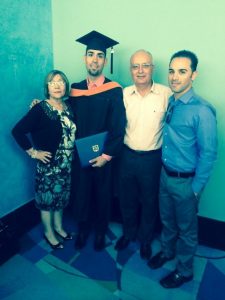 Regresó a la Universidad Politécnica y terminó su carrera de ingeniería eléctrica. Trabaja medio tiempo como ingeniero eléctrico y también trabaja tiempo completo en la farmacia de su padre.
Regresó a la Universidad Politécnica y terminó su carrera de ingeniería eléctrica. Trabaja medio tiempo como ingeniero eléctrico y también trabaja tiempo completo en la farmacia de su padre.
Miguel dice que su trasplante lo hizo más fuerte que antes, tanto mental como físicamente. Él está muy agradecido.
Ayudando a Otros
A medida que Miguel se aproxima al décimo aniversario de su trasplante de médula ósea, quiere involucrarse más en la creación de conocimiento sobre cómo unirte al registro Be The Match. Al contar su historia, quiere motivar a personas que se unan la registro y animar a los pacientes que necesitan un trasplante de médula ósea a que nunca pierdan la esperanza. Un trasplante de médula ósea le salvó la vida. Él insiste en que lo hizo más fuerte que antes, tanto física como mentalmente. “Podemos volver a la normalidad después de un trasplante … puede fortalecernos”.
“Nada es Imposible”
Puedes unirte al registro en apoyo de Miguel haciendo clic en este enlace:
También puedes ayudar a aumentar el conocimiento sobre la importancia sobre unión al registro. Miguel fue muy afortunado. No todos los pacientes logran encontrar un donante compatible. Simplemente no hay suficientes personas registradas para ser donantes potenciales. Puedes cambiar eso uniéndote al registro y difundiendo la palabra. Tú, tus amigos y tus familiares pueden convertirse en salvavidas … nada es imposible.
Para aquellos que no están listos o no pueden unirse al registro, Miguel te recuerda que una pequeña donación ayuda a nuestros esfuerzos para agregar donantes más étnicamente diversos al Registro Be the Match. La Fundación Icla da Silva se concentra especialmente en proporcionar resultados equitativos para los pacientes durante el trasplante, y eso no puede suceder hasta que exista más diversidad en el Registro. Dona en honor de Miguel a:
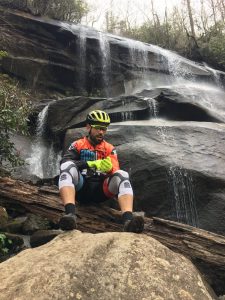 Por favor ayúdanos a compartir la historia de Miguel. Nada es imposible; como Miguel, creemos que más personas se unirán al registro y pacientes que sufren ganarán más esperanza.
Por favor ayúdanos a compartir la historia de Miguel. Nada es imposible; como Miguel, creemos que más personas se unirán al registro y pacientes que sufren ganarán más esperanza.
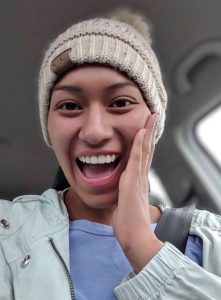 With tremendous sadness, we were recently notified of the untimely passing of Vivianna Sophia Lane. She died Tuesday, August 7th at the Lurie Children’s Hospital of Chicago. We extend heartfelt condolences to her family, her friends and anyone who was fortunate to come in contact with her. Sophia was a talented, passionate and hard working young woman who was fighting a battle with Acute Lymphoblastic Leukemia. We were working with Sophia and her family in their search to find a matching bone marrow donor. Sophia was 21 years old.
With tremendous sadness, we were recently notified of the untimely passing of Vivianna Sophia Lane. She died Tuesday, August 7th at the Lurie Children’s Hospital of Chicago. We extend heartfelt condolences to her family, her friends and anyone who was fortunate to come in contact with her. Sophia was a talented, passionate and hard working young woman who was fighting a battle with Acute Lymphoblastic Leukemia. We were working with Sophia and her family in their search to find a matching bone marrow donor. Sophia was 21 years old.
Her family has notified us that they would like us to keep her hope alive; ” if you haven’t done so, please sign up to be a bone marrow donor. One hundred and forty people signed up to save her life, and others. It made her so happy in her last days.”
Sophia’s Search for a Matching Donor
Vivianna “Sophia” Lane is a 21 year old college student at Lake Forest College, in Lake Forest, IL, a suburb north of Chicago. She is working towards her bachelors degree, a double major in Business and Studio Art.
Sophia is energetic, creative, outgoing and well rounded. She is passionate about art, golf, singing, biking and swimming. She is hard working. Her dedication to golf includes competing on the boys team in high school, caddying, coaching and working at a golf shop. Her devotion to art encompasses volunteering, two internships and her first solo exhibition at the Evanston Art Center.
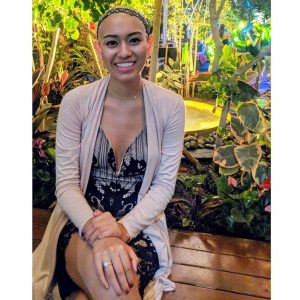 Sophia also has B cell Acute Lymphoblastic Leukemia. She was diagnosed last year (November 2017), underwent chemotherapy treatments and relapsed just last month (July 2018). Her doctors are working to get her into remission so that she can undergo a stem cell transplant. Sophia does not have a sibling match and will rely on the Be the Match registry to find a lifesaving donor.
Sophia also has B cell Acute Lymphoblastic Leukemia. She was diagnosed last year (November 2017), underwent chemotherapy treatments and relapsed just last month (July 2018). Her doctors are working to get her into remission so that she can undergo a stem cell transplant. Sophia does not have a sibling match and will rely on the Be the Match registry to find a lifesaving donor.
We need to find a matching stem cell donor for Sophia. The only way to do this is to ask more people to join the registry.
Joining is easy. Click the link, setup an account with an email and password, and answer a few questions. A swab kit will be sent to your home. Once you swab the inside of your cheek and return it to Be the Match, you are entered in the registry and included in patient searches.
More than 14,000 patients are searching every year. Their cure is inside you. You may save a life.
Please join the registry for Sophia: join the registry
To find more information about the donation process, please click here.
If you have already joined, please help us share Sophia’s story so that we may get others to consider becoming a potential life-saver.
Nothing Is ImpossibleMiguel is celebrating the anniversary of his bone marrow transplant…Miguel is celebrating life. He insists “nothing is impossible”.
Miguel Oriol Torres Lopez, is from Barranquitas, a small mountain municipality in the center of Puerto Rico. Miquel is currently an avid mountain bike racer, and approaching 10 years as bone marrow transplant survivor.
He insists that his experience, and his transplant, made him stronger than he was before.
His Bone Marrow Stopped Working
 It was 2007, while studying at Universidad Politécnica in San Juan, when Miguel was hospitalized and diagnosed with aplastic anemia. Aplastic anemia is a rare and serious condition. The bone marrow stops producing enough blood cells, leaving the patient feeling fatigued and at risk for life threatening infections. It affects the production of both red and white blood cells, as well as platelets.
It was 2007, while studying at Universidad Politécnica in San Juan, when Miguel was hospitalized and diagnosed with aplastic anemia. Aplastic anemia is a rare and serious condition. The bone marrow stops producing enough blood cells, leaving the patient feeling fatigued and at risk for life threatening infections. It affects the production of both red and white blood cells, as well as platelets.
 During the next year, Miguel received three different treatments in the hopes of stimulating his bone marrow at Hospital Auxilio Mutu in San Juan. He also received weekly blood and platelet transfusions. His body was suffering from infection when in September of 2008, a doctor told his family that he could die within the week. His hematologist, Dr. Jose A. Lozada had him air lifted to Houston, TX to the MD Anderson Cancer Center, where they stabilized his condition and began the process for a bone marrow transplant.
During the next year, Miguel received three different treatments in the hopes of stimulating his bone marrow at Hospital Auxilio Mutu in San Juan. He also received weekly blood and platelet transfusions. His body was suffering from infection when in September of 2008, a doctor told his family that he could die within the week. His hematologist, Dr. Jose A. Lozada had him air lifted to Houston, TX to the MD Anderson Cancer Center, where they stabilized his condition and began the process for a bone marrow transplant.
A Successful Bone Marrow Transplant
Despite the severity of his situation, it turns out Miguel was very fortunate. In a few months time, his condition stabilized, and the following four ‘impossibilities’ happened:
- A matching donor was identified. (Hispanic and Latino patients only have a 46% chance of finding a matching donor on the Registry.)
- The donor said yes to a bone marrow donation. (Only 37% of Hispanic/latino donors say yes when they get the call.)
- Miguel received a life-saving bone marrow transplant on November 4, 2008.
- 100 days later, his new bone marrow began producing blood cells.
The odds were stacked against Miguel, but he beat them. Miguel moved back to his hometown in Puerto Rico. He continued to travel back to the MD Anderson Cancer Center for check-ups. After 2 years in the hospital, and with all of the medications and chemo treatments, his body was weak. Through a friend, who was a spinning coach, Miguel started taking spinning classes to gain back body strength. His friend also introduced him to mountain bike racing.
After His Transplant
 Bike racing was new for Miguel. It gave him something he had been missing after all of that time in the hospital – movement, freedom and natural surroundings. In a very short time, he met many new friends and began training, entering and placing in long distance mountain bike races. His finishes were quite impressive:
Bike racing was new for Miguel. It gave him something he had been missing after all of that time in the hospital – movement, freedom and natural surroundings. In a very short time, he met many new friends and began training, entering and placing in long distance mountain bike races. His finishes were quite impressive:
- Baja Epic – 2nd place in his age group
- Prickly Pedal – 2nd place in his age group
- Pisgah Mountain Bike festival – 17th in open mens category
- Whiskey Off Road – top 20 overall
He went back to Universidad Politécnica and finished his electrical engineering degree. He works part time in electrical engineering and full time at his father’s pharmacy.
 Miguel says that his transplant made him stronger, both mentally and physically, than before. He is very grateful.
Miguel says that his transplant made him stronger, both mentally and physically, than before. He is very grateful.
Helping Others
As Miguel approaches the 10 year anniversary of his bone marrow transplant, he wants to become more involved in creating awareness about joining the Be The Match registry. By telling his story, he wants to motivate people to join, and encourage patients in need of a bone marrow transplant to never lose hope. A bone marrow transplant saved his life. He insists it made him stronger, both physically and mentally, than he was before. “We can be normal again after a transplant…it can make us stronger.”
“Nothing is Impossible”
You can join the registry in support of Miguel by clicking this link: join the registry
You can also help increase awareness about the importance of joining. Miguel was very fortunate. Not every patient is successful in finding a matching donor. There simply aren’t enough people who have registered to become a potential donor. You can change that by joining the registry and spreading the word. You, your friends and family may become life savers…nothing is impossible.
For those who are unwilling or not able to join the registry, Miguel is reminding them that a small donation helps our efforts to add more ethnically diverse donors to the Be the Match Registry. The Icla da Silva Foundation is especially focused on providing equitable outcomes for patients as they go through transplant, and that can’t happen until there is more diversity in the Registry. Donate in Miguel’s honor at:
 Please help us share Miguel’s story. Nothing is impossible; like Miguel, we believe that more people will join the registry and patients who are suffering will gain more hope.
Please help us share Miguel’s story. Nothing is impossible; like Miguel, we believe that more people will join the registry and patients who are suffering will gain more hope.
What if you were the only one who could save a life? If you could be that hero, the one that someone has been looking for and perhaps the only one in the world who fits the criteria, would you do it? Would you take the necessary steps and give life to another?
Every year, more than 14,000 patients are diagnosed with blood cancers like leukemia, lymphoma and sickle cell anemia. For these patients, a stem cell or bone marow transplant is their only hope for survival.
70% do not have a matching donor in their family. They are reliant on finding a donor through the Be The Match bone marrow registry. It’s the largest and most diverse registry in the world, but it’s not large enough, or nearly diverse enough.
The Icla da Silva Foundation is the largest recruitment center for Be The Match. Our focus is on supporting under represented communities, and we work tirelessly to find bone marrow matches for minority groups and mixed-background ethnicities whose current donor pool is either far too small, or almost non-existent.
The simple fact is that not enough people of ethnic diversity have joined the registry. This has resulted in a registry that is currently under represented for many ethnic segments. We are working to change this. You can help by joining and asking those close to you to do the same.
Aashim’s Search
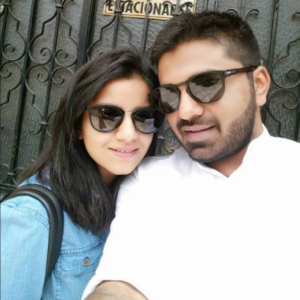 Aashim Joy is one of the potential recipients still searching for his perfect bone marrow match. He was diagnosed with B-Cell Type Acute Lymphoblastic Leukemia in July last year, and he requires a bone marrow transplant. Like many blood cancer sufferers, he has no other hope of beating the disease.
Aashim Joy is one of the potential recipients still searching for his perfect bone marrow match. He was diagnosed with B-Cell Type Acute Lymphoblastic Leukemia in July last year, and he requires a bone marrow transplant. Like many blood cancer sufferers, he has no other hope of beating the disease.
One year into his marriage, his diagnosis was a shock and the new couple’s American Dream seemed to fade before their eyes. Involved in the financial sector in New York City, the couple had recently relocated from Bangalore to start a new life together in the Big Apple when Aashim was diagnosed.
Reaching out to the Be The Match Registry, the largest in the world, Aashim and Reema were hopeful of a quick match and a happy ending. Despite their time and enthusiasm, the search has been longer than expected. People of Indian descent are not common on the registry, which makes the genetic and ethnic aspects of finding a perfect match more difficult.
“The Indian community is underrepresented [on the bone marrow donation registry], which makes it more difficult to find a matching donor.”
The search is still on for Aashim’s perfect bone marrow match. Both he and Reema remain positive of finding a match, urging everyone they meet to sign up and join the bone marrow registry. Not only for the sake of Aashim and his lovely wife, but for other patients who walk this difficult road beside them.
Read more about Ashim’s story here and here.
Joining the Registry
Signing up as a potential donor is simple. If you match a patient, it is obviously a life-saving experience for the recipient, but it can also be life-changing for the donor. You are literally giving someone a second chance at life.
The process involves clicking the link, setting up an account with an email and a password, and providing some general health and ethnicity information. You will receive a swab kit in the mail. Once you return the kit, you will be included in searches for patients in need of a matching donor.
If you match a patient and are eventually asked to donate bone marrow, please say yes. The process is simpler than you think. You can read about it here. The bone marrow cells in your body are replenished within four to six weeks after the procedure and your life goes on.
Each person who joins the Registry is a new potential match for a patient in need.
Every Bit Helps
If bone marrow donation is not an option for you, the following are also helpful ways to get involved and help a patient in need:
- Organize a bone marrow drive.. We’re here to provide tips and suggestions on how to run a successful drive in your community. Who knows? This could be the difference between life and death for somebody waiting for a bone marrow transplant.
- Donate your time. Patients and their families spend the majority of their precious time doing mundane administrative and logistical tasks while looking for assistance and finding a match. Why not offer to help out at a local clinic or volunteer at an organization like the Icla da Silva Foundation?
- Give Financially. Always a great need in a non-profit based organization, financial assistance is a tremendous help in donor searches, educational awareness events, and covering economically-challenged patients’ medical bills.
- Support events and fundraisers. There are people all over the world trying to assist in bone marrow donation and awareness. Go to their fundraising events, tweet about it, share a link on social media, support media efforts and invite some friends! Our 8th annual Matchmaker 5K Walk is just around the corner, sign up now.
Heritage and Ethnicity Matter!
Aashim is a wonderful example of where ethnicity and genetics play a pivotal role in bone marrow donation. The Indian donor pool is, unfortunately, not representative or diverse enough to cater to such a large population; and Aashim has not been able to find a suitable donor match thus far. The larger the pool of donors, the more diverse the pool becomes, significantly improving the probability of finding a match.
Success Stories
There is hope. Many of our success stories are a testament to perseverance and tenacity, often at the hands of an invested team of supporters and medical professionals. There are victories worth mentioning, and heroes who decided to take the leap.
The Flaherty Brothers
 At age 3, William was diagnosed with hemophagocytic lymphohistiocytosis (HLH). The immune system attacks the body’s own organs instead of protecting it against foreign invaders. Charles was only seven at the time, but turned out to be a perfect match for his little brother and insisted on donating his stem cells to save William. The procedure was on a Thursday and Charles was back at school by the Monday morning remembering the worst part of the whole experience as having to take off the bandage!
At age 3, William was diagnosed with hemophagocytic lymphohistiocytosis (HLH). The immune system attacks the body’s own organs instead of protecting it against foreign invaders. Charles was only seven at the time, but turned out to be a perfect match for his little brother and insisted on donating his stem cells to save William. The procedure was on a Thursday and Charles was back at school by the Monday morning remembering the worst part of the whole experience as having to take off the bandage!
Both brothers are now healthy and living life to the full back in Puerto Rico. After the procedure, Charles was treated to a ski trip with his father and unbelievably, it has lead to a lifelong passion. He was Puerto Rico’s single star on the Alpine Ski team at the 2018 Pyeongchang Olympics.
Read more about Charles and William’s story.
Mya
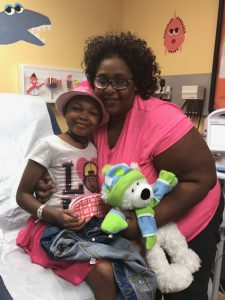 Smiling is a universal language, and Mya is an expert. This 9-year-old has been through an epic battle against T-cell leukemia and came out on top. Described as a ‘beautiful, positive, joyful spirit,’ she and her family are finally seeing the light after years of struggle against this devastating illness.
Smiling is a universal language, and Mya is an expert. This 9-year-old has been through an epic battle against T-cell leukemia and came out on top. Described as a ‘beautiful, positive, joyful spirit,’ she and her family are finally seeing the light after years of struggle against this devastating illness.
Chemotherapy was ineffective in treating her condition. Thankfully one of Mya’s brothers was a 100% percent match and he gladly donated his bone marrow stem cells. Her recovery is going well, but the treatment is expected to continue for the next two to five years, which means the financial strain on the family is huge.
Tancrede
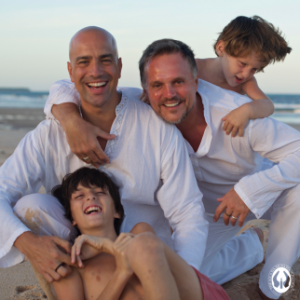 Born at 27 weeks, Tancrede Bouveret was the spark in his father, Luc’s, eye – a tiny, perfect addition to the family. At age of eleven he was diagnosed with Myelodysplastic Syndrome (MDS), which eventually progressed into Leukemia. Unfortunately, Tancrede’s little brother was not a suitable donor (only 25% of siblings are).
Born at 27 weeks, Tancrede Bouveret was the spark in his father, Luc’s, eye – a tiny, perfect addition to the family. At age of eleven he was diagnosed with Myelodysplastic Syndrome (MDS), which eventually progressed into Leukemia. Unfortunately, Tancrede’s little brother was not a suitable donor (only 25% of siblings are).
After an extensive search in Brazil, the U.S.A and France, the excited family was able to locate a 100% percent match and Tancrede was saved. Complications resulted in an extra long hospital stay and a need for more lymphocytes, which his donor gladly provided. On October 18, 2017, Tancrede met his bone marrow donor for the first time at the Icla da Silva Hope Gala in New York City. It was an unforgettable moment of shared joy and hope for humanity.
Read Trancrede’s story.
They Said Yes
The Icla da Silva Foundation has the privilege of seeing successful donation efforts and those which make them possible. Here are three of our favorite donor stories:
Join the Movement
So, are you open to the possibility of saving someone’s life? Take the leap and register as a bone marrow donor. Help however and whomever you can, because life is short and everyone deserves an opportunity to flourish in the time we have been granted.
Thanks for reading. Please share.
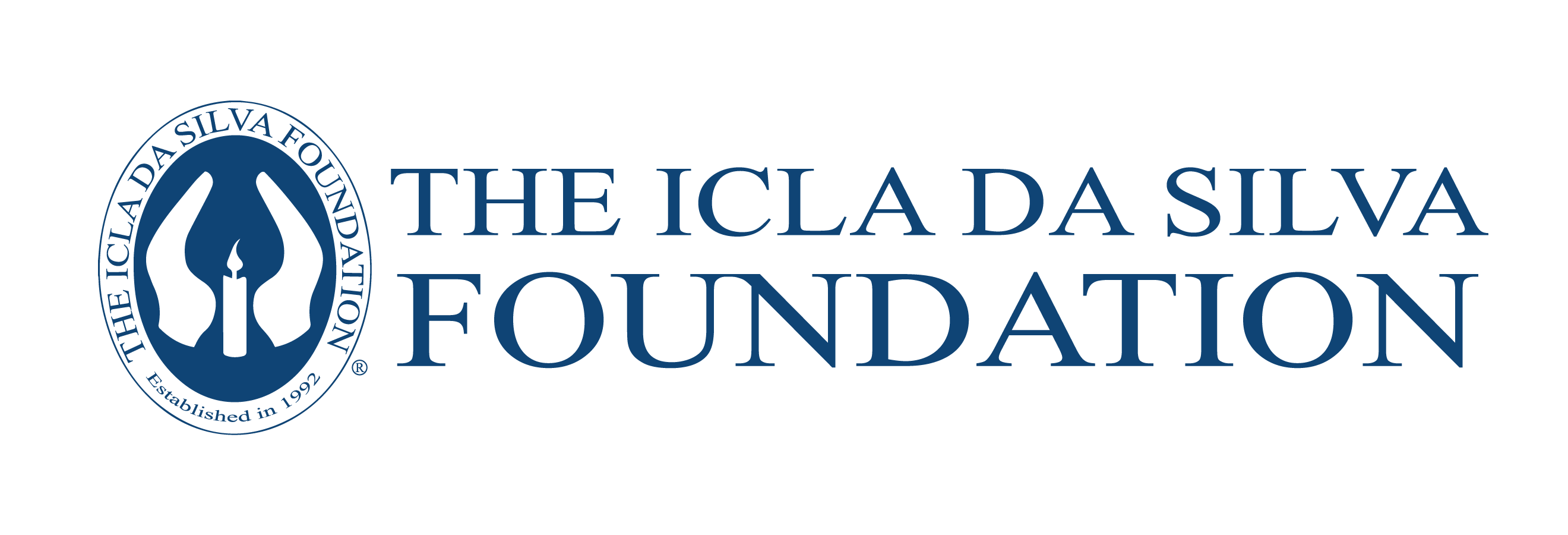
 Inglês
Inglês Espanhol
Espanhol Português
Português